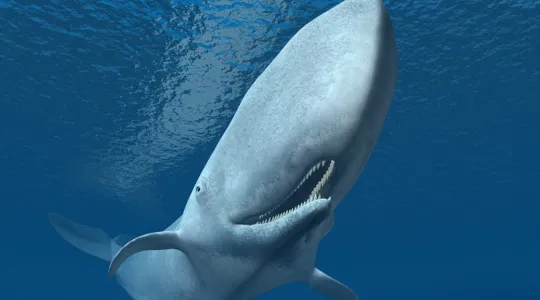Introduction
In a groundbreaking technological and scientific achievement, researchers from MIT's Computer Science and Artificial Intelligence Laboratory (CSAIL) and Project CETI (Cetacean Translation Initiative) have unveiled a new AI system capable of deciphering the complex communication system of sperm whales. This revolutionary advancement marks a significant leap in our understanding of marine biology and artificial intelligence, revealing that the enigmatic clicks and sounds of these ocean giants form a sophisticated language system, akin to a phonetic alphabet.
The Complexity of Whale Communication
Sperm whales (Physeter macrocephalus) are known for their deep and resonant clicks, which serve various purposes such as echolocation and communication. Until now, the true nature of these vocalizations remained a mystery. The new AI model developed by CSAIL and Project CETI has decoded these sounds, identifying patterns that suggest a rich and structured form of communication.
This intricate system, described as a "sperm whale phonetic alphabet," demonstrates that the whales use their clicks not just to navigate the deep ocean but to convey complex information among themselves. This discovery opens new avenues for understanding how non-human species develop and use language, challenging the long-held belief that advanced linguistic capabilities are unique to humans.
The AI's Role in Decoding the Language
The AI system utilized by the researchers employs sophisticated machine learning techniques to analyze vast amounts of audio data collected from sperm whale populations around the world. By examining the frequency, duration, and sequence of the whales' clicks, the AI can identify distinct "words" and "sentences" within their vocal repertoire.
This analysis was facilitated by a combination of deep learning algorithms and pattern recognition technologies, allowing the AI to draw connections between different vocalizations and their potential meanings. The project's success underscores the growing importance of AI in fields beyond traditional technology, including wildlife conservation and behavioral science.
Implications for Marine Biology and Conservation
The ability to decode whale communication could have profound implications for marine biology and conservation efforts. Understanding the nuances of sperm whale language could enable scientists to gain insights into their social structures, mating behaviors, and responses to environmental changes. This knowledge is critical for developing more effective conservation strategies, particularly as many whale populations face threats from human activities such as shipping, fishing, and climate change.
Additionally, this research highlights the potential for AI to bridge the gap between humans and other intelligent species. By translating the "language" of sperm whales, we can foster a deeper connection and appreciation for these majestic creatures, promoting a more empathetic approach to their preservation.
The Future of AI in Animal Communication
The success of this project sets the stage for further applications of AI in studying animal communication. Similar techniques could be employed to decode the vocalizations of other marine mammals, such as dolphins and orcas, as well as terrestrial species like birds and primates. Each breakthrough enhances our understanding of the natural world and underscores the interconnectedness of life on Earth.
Moreover, these advancements in AI and machine learning demonstrate the technology's versatility and potential for positive impact. From healthcare and education to environmental science and wildlife conservation, AI continues to transform various sectors, offering innovative solutions to complex problems.
Conclusion
The decoding of sperm whale communication by AI represents a monumental step forward in both technology and our understanding of the natural world. This achievement not only sheds light on the intricate lives of these marine giants but also illustrates the limitless possibilities of AI when applied to interdisciplinary research. As we continue to explore and expand the capabilities of AI, we can look forward to more groundbreaking discoveries that will enrich our knowledge and help protect the diverse life forms that share our planet.





